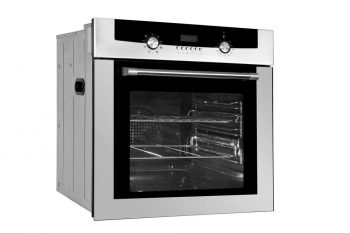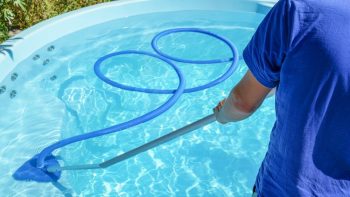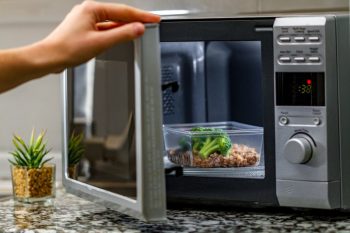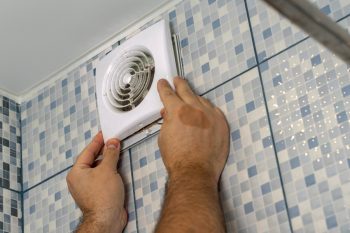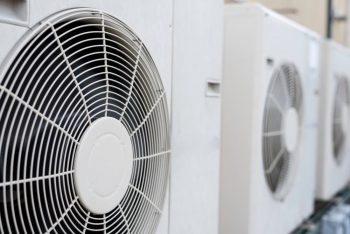
The decision to purchase a 40-gallon electric water heater is a significant investment and one that should be made with careful consideration. With the numerous brands and models available on the market, it can be challenging to determine which one is the best fit for your needs. In this comprehensive guide, we will delve into the top-rated 40-gallon electric water heaters, their unique features, price ranges, installation requirements, and maintenance practices.
The best 40-gallon electric water heater largely depends on your specific needs and preferences. However, some top-rated models include the Rheem Performance 40 Gal. Electric Tank Water Heater, Bradford White BWC RE340S6, A.O. Smith ENS-40 ProMax, and Rheem ELDS40-C. These models are known for their energy efficiency, high first-hour ratings, durability, and additional features. Always consider factors like energy efficiency, first-hour rating, heating elements, tank material and insulation, warranty, installation and size, and additional features when making your choice.
Top-Rated 40-Gallon Electric Water Heaters
1. Rheem Performance 40 Gal. Electric Tank Water Heater
The Rheem Performance 40 Gal. Electric Tank Water Heater is a top-rated model known for its high energy efficiency rating of 0.93 and an annual operating cost of $419. Its first-hour rating (FHR) is 54 gallons, which is the amount of hot water it can produce in an hour of high usage. The easy access anode rod allows for easy replacement, potentially doubling the life expectancy of the water heater.
2. Bradford White BWC RE340S6
The Bradford White BWC RE340S6 is another highly recommended option, known for its energy efficiency and high first-hour rating. However, this model is more expensive than the Rheem model, with a price tag of $823.95.
3. A.O. Smith ENS-40 ProMax
The A.O. Smith ENS-40 ProMax has an energy efficiency factor of 0.92 and features Incoloy stainless steel heating elements and a glass coating with a diffuser tube for longer service and maximum hot water output.
4. Rheem ELDS40-C
The Rheem ELDS40-C is suitable for small families and offers energy efficiency, a compact design, and superior water-heating capability. It has a first-hour rating of 55 gallons.
Essential Features to Consider
When shopping for a 40-gallon electric water heater, consider factors such as energy efficiency, first-hour rating (FHR), heating elements, tank material and insulation, warranty, installation and size, and additional features.
1. Energy Efficiency
Look for a water heater with a high energy efficiency factor (EF). The EF indicates the efficiency of the water heater, with a higher number indicating more efficiency. Energy-efficient models may cost more upfront but can result in significant savings in energy costs over time.
2. First-Hour Rating (FHR)
The FHR tells you how many gallons of hot water a heater can produce during an hour of high usage. Make sure the FHR meets your household’s peak-hour demand for hot water.
3. Heating Elements
The type and quality of the heating elements can affect the efficiency and longevity of the water heater. For instance, some models feature Incoloy stainless steel heating elements, which are more durable than standard copper-coated elements.
4. Tank Material and Insulation
The material of the tank and its insulation can affect the heater’s durability and energy efficiency. Look for models with corrosion-resistant tank materials and good insulation to reduce heat loss.
5. Warranty
Check the warranty on both the tank and parts. A longer warranty can provide peace of mind and protect your investment.
6. Installation and Size
Consider the space where the water heater will be installed. Some models may require more space due to increased insulation or other features. Also, consider the ease of installation. Some models feature side-mounted water connections for easier installation.
7. Additional Features
Some models come with additional features like automatic sediment-cleaning systems, corrosion-resistant anode rods, and commercial-grade drain valves. These features can enhance the performance and lifespan of the water heater.
Price Ranges
The price range for the best 40-gallon electric water heaters varies depending on the brand, model, and features of the heater. Based on the search results, the prices can range from as low as $400 to as high as $2000.
Installation Requirements
The installation requirements for water heaters can vary depending on the type of water heater (gas, electric, tankless, etc.) and local building codes. However, there are some general requirements that are typically applicable:
- Location: The water heater should not be installed in bedrooms, closets, or bathrooms due to the risk of carbon monoxide poisoning. It should have a perimeter of at least 24 inches around it, and if it’s placed in the garage, there must be a protective barrier before it. The location should also have at least 12 inches of clearance all around to ensure sufficient airflow.
- Drain Pan: If the water heater is in a location where leaking can cause damage, a drain pan must be installed underneath it.
- Sediment Trap: A sediment trap should be installed as per code regulations.
- Earthquake Straps: In certain regions, earthquake straps are required to secure the water heater and prevent it from tipping over in case of a natural disaster.
- Ventilation: Proper ventilation is crucial to minimize the risk of CO poisoning and back-drafting. The venting requirements can vary depending on the type of water heater and local codes.
- Combustion Air: Fuel-based water heaters require a sufficient amount of combustion air to function. The combustion air requirements are calculated using a formula provided by the International Code Council (ICC).
- Temperature & Pressure Relief Valve: The correct placement of the T&P relief valve is essential for safety.
- Platform: Water heaters with ignition sources, like gas or propane, need to sit on a platform. The water heater itself will have to be at least 18 inches off of the floor.
- Electrical/Gas/Other Requirements: Everything must be exact when it comes to the electrical aspects. So gas and water pipes need to be bound with wire and clamps to the ground system.
- Insulation: Small-capacity gas-fired water heaters, in the 30-gallon to 50-gallon range, must now have at least 2 inches of insulation on the sidewalls of the tank and 2 to 4 inches at the top of the tank.
- Permits: Not all cities require you to have a permit to replace your water heater. However, it’s highly recommended that all homeowners get a water heater permit for this project.
Maintenance and Care
Maintaining a 40-gallon electric water heater involves several steps to ensure its efficiency and longevity. Here are some key maintenance tasks you should perform:
- Test the Temperature-Pressure-Release (TPR) Valve: This valve opens if the tank pressure gets too high. To test it, shut off the power and the cold-water supply valve. Place a bucket under the pipe connected to the TPR valve on the top or side of the tank. Lift the valve’s tab to let some water out, then let go. If water keeps flowing, drain the tank partway, unscrew the old valve with a pipe wrench, and install a new one.
- Check the Anode Rod: This rod helps prevent the inside of the tank from rusting out. To check it, put a hose to the tank’s drain cock and let out a few gallons of water. Then unscrew the rod. If it’s less than ½ inch thick or coated with calcium, buy a new one, wrap its threads with Teflon tape, put it back in the tank, and tighten securely.
- Drain the Tank and Wash Out Sediment: Sediment buildup in the tank can reduce your water heater’s energy efficiency and clog your water lines. To clean it, drain the remaining water in the tank into a bucket, then stir up the sediment on the tank’s bottom by briefly opening the cold-water supply valve. Drain and repeat until clean water comes out of the hose.
- Adjust the Temperature: Find the temperature dial on the side of the tank and adjust it to 120 degrees using a flathead screwdriver. Lowering the temperature can save up to 5 percent in energy costs for every 10 degrees it is lowered.
- Insulate the Pipes and the Heater: Adding insulation reduces heat loss by up to 45 percent and can shave as much as 9 percent off water-heating costs. Buy some self-sticking 3/8-inch-thick foam pipe insulation that matches the pipes’ diameter and slide the foam over the hot-and cold-water pipes as far as you can reach. Insulating the cold-water pipe prevents condensation in summer. For the heater, cut the insulating blanket to fit around pipes, the TPR valve, and the temperature control sticking out of the tank. Wrap the side of the tank, and seal cuts with foil tape.
- Flush the Water Heater: This should be done every six months to prevent a build-up of rust and corrosion. Connect a standard garden hose to the water heater drain outlet near the base. Place the other end of the hose near a floor drain or in a large bucket. Open the drain spigot and allow the water to flow until it runs clear.
In conclusion, the best 40-gallon electric water heater for you will depend on your specific needs, including your household’s hot water usage, available space for installation, and budget. By considering the factors outlined in this guide, you can make an informed decision and find a water heater that meets your needs.
Frequently Asked Questions
What is the life expectancy of a 40-gallon electric water heater?
The average lifespan of a 40-gallon electric water heater is typically about 8 to 12 years. This can vary based on factors such as the quality of the unit, the hardness of the water, and how well the water heater is maintained.
How long does it take to heat up a 40-gallon electric water heater?
On average, a 40-gallon electric water heater takes about 1 to 2 hours to heat up. This can vary based on the specific model and the initial temperature of the water.
Can I install a 40-gallon electric water heater myself?
While it is possible to install a water heater yourself, it’s generally recommended to hire a professional. Incorrect installation can lead to water leaks, electrical issues, and even gas leaks in the case of gas water heaters.
How much does it cost to have a 40-gallon electric water heater installed?
The cost of installing a 40-gallon electric water heater can vary widely depending on your location, the specific model, and whether any modifications are needed for the installation. On average, you can expect to pay between $300 and $1,000 for professional installation.
Is a 40-gallon electric water heater sufficient for a family of 4?
A 40-gallon electric water heater should be sufficient for a family of four, assuming average hot water usage. However, if your family uses a lot of hot water – for example, if you all shower at the same time of day, or if you frequently run the dishwasher and washing machine at the same time – you may want to consider a larger tank.
What are the signs that my 40-gallon electric water heater needs to be replaced?
Signs that your water heater may need to be replaced include: the water isn’t heating up as well as it used to, the tank is leaking, you’re hearing unusual noises from the tank, the water has a strange smell or color, or the tank is more than 10 years old.

